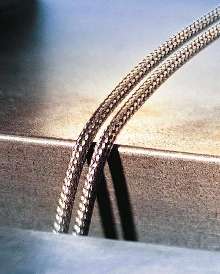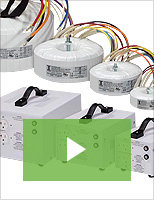
Photonic Crystal Fibers support high gain fiber lasers.
Dual clad, Ytterbium-doped, Series F-DC is available in several core sizes up to 40 microns. Some fibers are co-doped with photosensitive materials to allow fiber grating inscription with UV laser. Outer cladding material is air, allowing pump light to be coupled into inner cladding at numerical aperture greater than 0.6. Core has structured PCF cross-section to provide large mode area, which...
Read More »Fibers are suited for telecommunications industry.
Panda-style, polarization maintaining (PM) Erbium-doped fiber enables development of next-generation PM amplifiers and short-pulse lasers. Dopant concentration allows short fiber lengths, beneficial for managing dispersion. Co-doped Erbium-Ytterbium (Er-Yb) double-clad fiber is suited for high-power amplifiers used in CATV and telecom applications. Polarization maintaining 1300 nm fiber is...
Read More »Optical Fiber suits reduced radius applications.
Bend insensitive fiber employs numerical aperture (NA) that delivers lower bend loss at 1310 and 1550 nm without significantly affecting splicing performance. Available in 125 or 80 Ã-µm clad diameter, fiber is suited for tight bend radius conditions, multiple fiber wraps on mandrel, fused fiber couplers, and sensors.
Read More »
Sensing Fibers are suitable for low profile applications.
STEELSKIN(TM) plastic sensing fibers feature DURA-BEND(TM) multi-core construction and braided 304 grade stainless steel over-jacket for wear resistance. With 2.9 mm OD, fibers carry light through bend radius of 10.0 mm with no signal loss. Fibers are available in 3 and 6 ft standard lengths and operate in temperatures from 0-70Ã-
Read More »
How to Select a Thermal Fluid Heater for Your Process
Do you know the important factors you should consider when comparing different types of thermal fluid heaters?
Read More »Polarization-Maintaining Fiber offers high birefringence.
Bow-tie fiber is available at operating wavelengths of 1300 and 1550 nm, has cladding diameter of 80 Ã-µm and coating diameter of 165 Ã-µm. Reduced outer cladding diameter improves coil-turn density. Applications include fiber-optic gyroscopes, voltage and current sensors, high-data-rate communications systems, laser pigtailing, connectivity between source lasers and modulators, and...
Read More »Erbium-Doped Fibers operate in C-Band and L-Band.
Rare-earth FS-ER-7A28 and FS-ER-7B28 are for use in C-Band and L-Band, respectively. Both work in erbium-doped optical amplifiers (EDFAs) and amplified spontaneous emission (ASE) sources, and use common fusion splicing equipment. High erbium concentration results in fiber lengths that can be substantially reduced to meet desired gain.
Read More »
Focusing Fibers detect ultra-small targets.
Focused-beam fibers pipe light into otherwise inaccessible locations, and focus beam to very small spot, allowing fiber-optic sensors to detect small parts. Fibers come in fixed and adjustable sensing distance models. L4C6 and L4C20 convergent lens attachments allow sensing at fixed focal distances of 0.24 and 0.79 in., respectively, with spot dia. as small as 0.01 in. Other attachments include...
Read More »
Ensure Your Medical Device Meets Regulatory Standards with Triad's Custom Magnetics
Triad Magnetics' custom components for medical devices are designed and manufactured with the strictest regulatory standards in mind. Our capabilities include rapid design, prototyping, and testing of inductors, transformers, and power supplies for medical equipment. Check out our video to learn more.
Read More »



